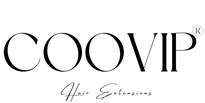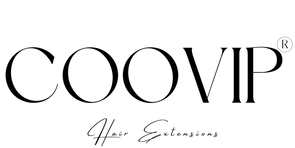TikTok’s Hottest Trend: Hair Theory – What It Means for Stylists and Extension Lovers
The Trend That Took Over Your FYP
Scroll TikTok for more than five minutes and chances are you’ll stumble across a “hair theory” video. Sometimes it’s a split-screen before-and-after; sometimes it’s a stylist breaking down how hair changes your “aura.” Either way, it’s racked up millions of views — and it’s not slowing down.
But what exactly is hair theory? For stylists, it’s a playful yet surprisingly deep framework for understanding how hair shapes not just appearance but perception. And for hair extension users? It’s an invitation to experiment with styles that can completely shift your vibe in seconds.
So… What Is Hair Theory, Really?
In TikTok speak, “hair theory” is the idea that changing your hair — style, length, texture, even color — changes how people see you and how you see yourself. It’s half psychology, half makeover magic.
Creators use it to show:
-
Personality shifts – from soft romantic curls to sharp, sleek bobs.
-
Mood expression – high ponytail for power, messy bun for carefree charm.
-
Social perception – the subtle ways hair changes how approachable, edgy, or elegant you appear.
For professionals, hair theory isn’t new — we’ve always known a fringe can frame a face differently or that long waves feel more bohemian than a blunt cut. TikTok just gave it a catchy name and a viral stage.
Why It’s More Than Just a TikTok Fad
Trends come and go, but hair theory taps into something timeless: the emotional connection between style and identity.
-
It fuels experimentation. People who’ve worn their hair the same way for years are trying new styles “just to see” how it shifts their look.
-
It drives salon traffic. Clients are coming in with screenshots from TikTok, eager to recreate a “hair theory” moment.
-
It encourages self-awareness. Users notice how their mood, posture, and interactions change when their hair changes.
How Hair Extensions Fit Into Hair Theory
Extensions are a hair theory goldmine. They let you “test-drive” an aesthetic without commitment — and on TikTok, that’s content gold.
-
Instant Length Shift – Going from a blunt bob to waist-length waves can completely change your silhouette.
-
Volume Experiments – Adding density changes how curls or updos read on camera.
-
Color Play – Blending in highlights or lowlights with extensions changes the warmth, brightness, or contrast of your look without permanent dye.
Pro stylists know: the before-and-after power of extensions is tailor-made for viral videos.
The Five Core “Hair Theory” Archetypes on TikTok
1. The Romantic
Soft waves, curtain bangs, pastel tones. The vibe: approachable, gentle, daydreamer.
2. The Power Player
Sleek straight hair, sharp parts, structured ponytails. The vibe: confident, in control, modern.
3. The Rebel
Messy layers, vivid colors, undone texture. The vibe: fearless, creative, a little unpredictable.
4. The Minimalist
Clean buns, natural tones, barely-there waves. The vibe: effortless elegance.
5. The Playful
Braids, accessories, bouncy curls. The vibe: energetic, fun, the life of the party.
How Stylists Can Use Hair Theory in the Chair
-
Ask clients who they want to “be” for the day — not just what style they want.
-
Offer quick transformations — like clip-in extensions or a braided style — to let them see multiple “versions” of themselves in one session.
-
Incorporate TikTok filming — set up a quick before/after reel for clients who want content.
Why Hair Theory Works So Well on TikTok
TikTok’s short-form format thrives on dramatic visual change. Hair theory videos deliver:
-
A clear “before” and “after” moment.
-
Relatable emotions — viewers imagine how they would feel in that style.
-
Shareability — people send videos to friends with captions like “This is so you.”
And because hair theory isn’t tied to one specific look, it’s endlessly renewable — every haircut, updo, or color shift is a fresh take.
Pro Tips for Filming Hair Theory Content
-
Lighting is everything — natural light or soft ring lights keep hair detail crisp.
-
Show movement — slow-motion hair flips or turnarounds highlight texture.
-
Keep transformations realistic — viewers trust content they can imagine recreating.
-
Use trending audio — TikTok’s algorithm boosts sounds that are already performing well.
Extensions + Hair Theory: Styles That Go Viral
-
The “Rapunzel Reveal” – Quick cut from natural hair to ultra-long extensions.
-
“Volume Shock” – Fine hair transformed into a thick, bouncy blowout.
-
Color Pop Braids – Neutral hair with brightly colored extension pieces braided in.
-
“Half and Half” – Split-screen with one side styled, the other natural.
The Emotional Side of Hair Theory
This is where the trend resonates deepest. People don’t just look different — they feel different. A bride-to-be might see her “romantic” self for the first time; a new graduate might meet her “power player” self the day before a job interview.
Hair theory lets people try on confidence, charm, or boldness, and sometimes… they keep it.
2025 Hair Theory Trends to Watch
-
Accessory-Driven Transformations – Clips, ribbons, and barrettes as the focal point.
-
Multi-Day Hair Theory – Showing different “personalities” over a week without drastic cuts.
-
Hybrid Styles – Combining archetypes, like minimalist shapes with rebel color pops.
Final Thoughts
Hair theory might be a TikTok-born term, but it’s grounded in truths stylists have known forever: hair is more than just appearance. It’s personality in motion.
Whether you’re using it as a salon consultation tool, a marketing hook, or just a reason to play with your own extensions, hair theory is a reminder that changing your hair can be fun, empowering, and even a little addictive.
FAQs
1. What’s the main idea behind TikTok’s hair theory?
That changing your hair style, length, or color changes both how you feel and how others perceive you.
2. Can I try hair theory without cutting my hair?
Yes — extensions, wigs, and temporary color sprays are perfect for experimenting.
3. Which hair extensions work best for quick transformations?
Clip-ins are the fastest for a same-day change, but tape-ins and nano beads give a seamless, longer-lasting effect.
4. Is hair theory only for women?
Not at all — it applies to anyone experimenting with their hairstyle.
5. How do I make hair theory videos more engaging?
Focus on a dramatic before-and-after, use trending sounds, and keep clips under 15 seconds for maximum impact.








